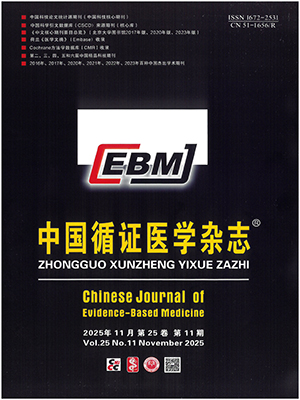Objective To evaluate the effectiveness and safety of dexmedetomidine for postoperative sedation in cardiac patients.
Methods Such databases as PubMed, EBSCO, Springer, Ovid, The Cochrane Library, CBM, CNKI, VIP and WanFang Data were searched electronically from the date of their establishment to May 2012, and other relevant journals and references of the included literature were also searched manually. Two reviewers independently screened the studies in accordance with the inclusion and exclusion criteria, extracted data and assessed methodology quality. Then the meta-analysis was performed using RevMan 5.1software.
Results A total of 8 randomized controlled trials (RCTs) involving 1 157 patients were included. The Jadad scores of 7 RCTs were more than 3, and only 1 RCT scored 2. The results of meta-analysis showed that compared with the control group, dexmedetomidine significantly raised peripheral oxygen saturation (RR=0.90, 95%CI 0.31 to 0.49, P=0.003), decreased the incidence of average heart rate (RR=–5.86, 95%CI –7.31 to ?4.40, P lt;0.000 01), ventricular tachycardia (RR=0.27, 95%CI 0.08 to 0.88, P=0.03), delirium (RR=0.28, 95%CI 0.16 to 0.48, P lt;0.000 01) and postoperative hyperglycemia (RR=0.57, 95%CI 0.38 to 0.85, P=0.006), and reduced the number of patients who needed vasoactive agents such as epinephrine (RR=0.53, 95%CI 0.29 to 0.96, P=0.04) and β-blocker (RR=0.60, 95%CI 0.38 to 0.94, P=0.03). However, it failed to shorten the time of both ICU stay (RR=?1.24, 95%CI ?4.35 to 1.87, P=0.43) and mechanical ventilation (RR=?2.28, 95%CI ?5.13 to 0.57, P=0.12), increase mean artery pressure (RR=?2.78, 95%CI ?6.89 to 1.34, P=0.19), and well control postoperative nausea, vomiting and atrial-fibrillation. There were no significant differences between the two groups in myocardial infarction, acute cardiac failure, acute kidney failure, and mortality rate.
Conclusion For postoperative sedation in cardiac patients, dexmedetomidine can effectively stabilize hemodynamic indexes, and reduce tachycardia, delirium, postoperative hyperglycemia and vasoactive agents. However, it has no marked influence on the prognosis. For the quantity and quality limitation of included studies, this conclusion needs to be proved by performing more high quality and large sample RCTs.
Citation: WANG Limei,CHANG Xiaoli,REN Xuli,LV Huangwei. Effectiveness and Safety of Dexmedetomidine for Postoperative Sedation in Cardiac Patients: A Meta-Analysis. Chinese Journal of Evidence-Based Medicine, 2013, 13(1): 93-99. doi: 10.7507/1672-2531.20130017 Copy
Copyright ? the editorial department of Chinese Journal of Evidence-Based Medicine of West China Medical Publisher. All rights reserved




